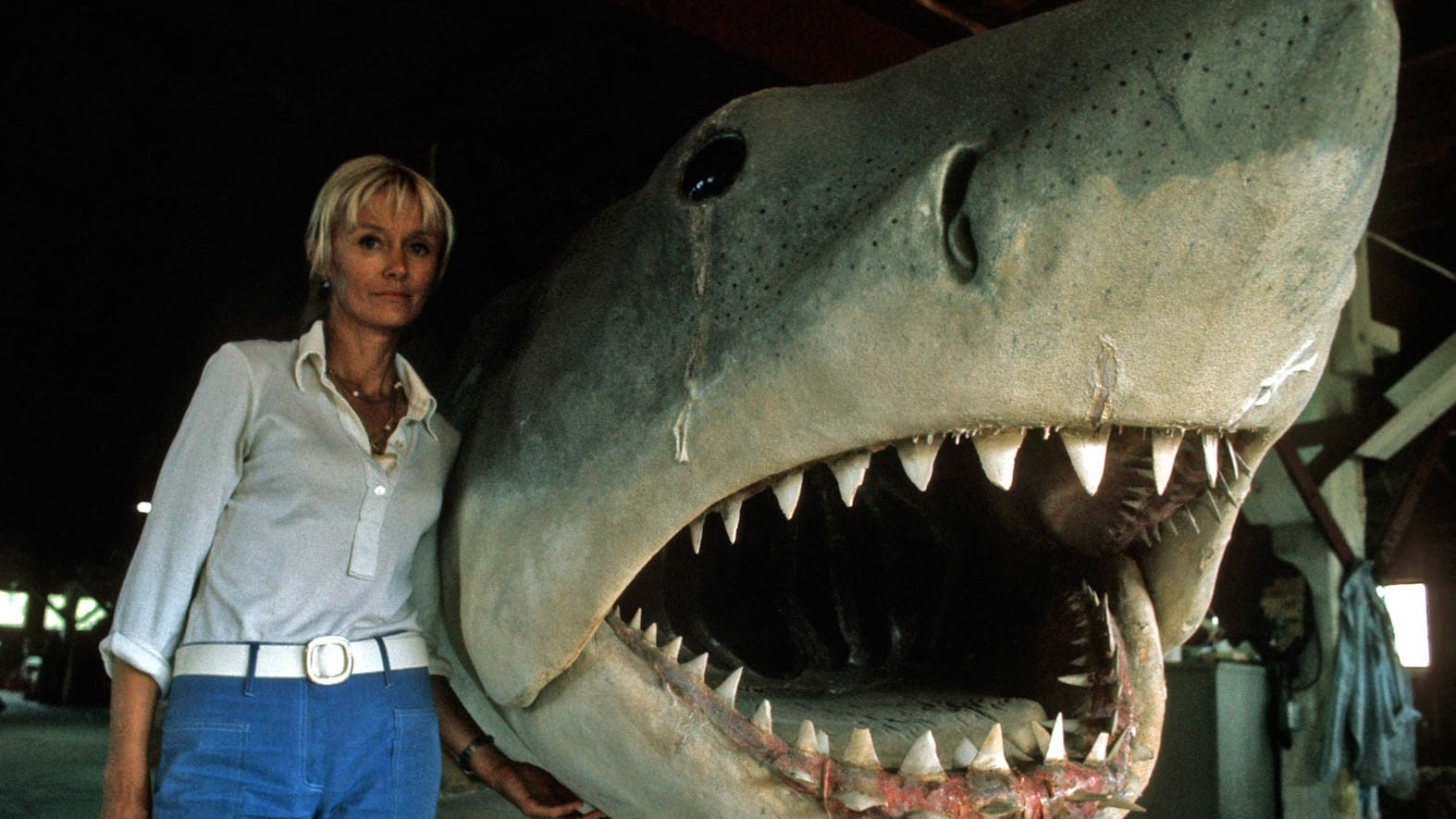A documentary about a shark expert who went from inspiring Jaws to becoming a fierce defender and protector of these magnificent creatures? Sign me up. Sally Aitken brings Valerie Taylor’s story to life in Playing with Sharks, chronicling the woman’s life from her beginnings as a hunter to her move to photography to her work as a conservationist and activist. Most people can admit to a fear of sharks. As Taylor might say, the propaganda against sharks has been pretty prevalent in the media. They’re known as ruthless, underwater hunters. The apex predator. Films like Jaws have played these animals like villains with vendettas.
In the eyes of Taylor, they might as well be puppies. In fact, in one interview, she compares sharks to dogs, saying that once you know them, you have an understanding of them. And Taylor has spent a lifetime getting to know sharks. Her story starts back in the 50s when she entered into the male-dominated sport of spearfishing in Australia. There, she met her future husband, Ron, and the two soon rose to the top as hunters. Back then, Taylor hunted fish and even killed a shark. The sea was abundant 70 years ago, with Taylor saying, “You could take what you wanted, and never make a difference.”
But, soon the thrill of hunting left them and in order to support themselves, Taylor and her husband became photographers. He photographed her with all manner of sea life. Taylor in her pink swimsuits with her ribbon in her long blonde hair looked more like a mermaid than a diver. And of course, as the photographs sold, the demand came for photos with more and more dangerous animals. After all, we all love a good beauty and the beast story, and what can be more beastly than a bloodthirsty shark?
There’s a lot to admire when it comes to the Taylors. Ron is an innovator, creating his own equipment and pushing the boundaries of underwater photography, while Valerie is somehow fearless, developing an enviable connection to the sea life she encountered. It’s no wonder their footage caught the eyes of the world, so much of it is straight-up shocking that you can’t believe what you’re seeing, only for the doc to cut from the footage to an interview with Valerie herself, now at 85.

We don’t need perspectives from experts like Jacques Cousteau’s son or multiple marine biologists, the proof is in the pudding. On one remarkable trip, the Taylors and fellow shark enthusiasts travel with director Peter Gimbel in order to film his film Blue Water, White Death and after tracking sharks, they finally come across Oceanic Whitetips. By this point, we’ve learned that the Taylors have trained sharks to pose for photos, they’ve swum with them on numerous occasions. But Oceanic Whitetips, we’re told, are responsible for more human deaths than all other sharks put together. So what happens next? Do they go down in a shark cage? Yes, but then they get out of the cage, and after observing the sharks’ feeding habits (they were feasting on a dead whale), the divers adapted to the sharks and literally joined the shark pecking order.
Blue Water, White Death is a success due to this cinematography, and soon Peter Benchley is inspired to write Jaws. Steven Spielberg is brought on, the Taylors are called, and badda bing badda boom, we have the hit 1975 film, Jaws. Unfortunately, Jaws also created a shark panic, much to the dismay of the Taylors. After the release of the film, Valerie and Ron go on damage control. But despite their best efforts, the film inadvertently inspired people to start hunting and killing sharks. Taylor begins writing letters, pestering politicians to protect bodies of water and prevent hunters from exterminating the animals.
The distinct feeling you get while watching Playing with Sharks is the infectious love of sharks that Taylor has. If you entered into this documentary thinking sharks were just killing machines, prepare to have your opinions change. In one astounding myth-busting moment, Taylor literally puts her own life in a shark’s hands in order to disprove a popular myth about a shark’s bite and its crush power. Taylor is determined for the perspective on sharks to change and her passion and dedication to the animals is inspiring. It’s impossible not to want to get out there and immediately start swimming with sharks.
As times change, the tone shifts from hunting sharks out of fear to hunting them for their fins. With the rise of the upper-middle class in China, there is a higher demand for shark fins in order to make shark fin soup (a gelatinous mess that tastes like very little, I am speaking from personal experience as a Chinese person who has had the soup). Whether it’s a greed to collect trophies or a hunger for a delicacy, it’s hard to imagine the ocean of 70 years prior. One where you could take whatever you wanted from the sea and you couldn’t make a dent. Taylor reminds us of the importance of preservation and notes that only by creating enormous marine parks can we totally protect these animals.
From hand-feeding sharks off the end of a boat (and giving them a pat on the head) to swimming among bull sharks in Fiji, it is undeniable that the gem of this film is Valerie Taylor herself. You have no doubt that she would happily lay her life on the line in any capacity to protect the sharks that she loves so dearly. The absolute magic and connection she has with sharks, one that almost feels supernatural, is matched with the fantastic footage shot by Ron Taylor. Being given a glimpse into this compilation of their lives is what makes Playing with Sharks shine.
This film review was based on the premiere at Sundance Film Festival 2021 and has been acquired by National Geographic Documentary Films. Photo by Ron & Valerie Taylor | Courtesy of Sundance Institute.